Results 5,931 to 5,940 of 12096
Thread: Anandtech News
-
04-21-16, 09:32 PM #5931
Anandtech: AMD Reports Q1 FY 2016 Results: Lower Revenue But New IP Licensing Agreeme
AMD announced their first quarter results from fiscal year 2016. AMD has certainly been struggling of late, but CEO Lisa Su made the announcement that AMD had made a joint-venture with THATIC for x86 processor development for the Chinese market. AMD will receive $52 million immediately and the total agreement is for $293 million, plus future royalties. This is a significant agreement for AMD, and licensing their IP is one of the ways they hope to get back to profitability.
Looking at the overall quarter, AMD had revenues of $832 million, which is down a significant 19% from last year. But the good news for AMD is that their gross margin is up to 32%, an increase over last quarter and having it come back to the same level as a year ago. AMD reported an operating loss of $68 million for the quarter, which is an improvement over the $137 million loss last year. The net loss for the quarter was $109 million, or $0.14 per share, which is once again an improvement over last year’s $180 million loss, or $0.23 per share.
AMD also reports non-GAAP results, which exclude restructuring costs and stock-based compensation. On a non-GAAP basis, AMD had an operating loss of $55 million, compared to a $30 million loss last year where they had high restructuring charges. Gross margin came in at the same 32%, and there was a net loss of $96 million, or $0.12 per share, compared to a net loss of $73 million, or $0.09 per share last year.AMD Q1 2016 Financial Results (GAAP) Q1'2016 Q4'2015 Q1'2015 Revenue $832M $958M $1030M Gross Margin 32% 30% 32% Operating Income -$68M -$49M -$137M Net Income -$109M -$102M -$180M Earnings Per Share -$0.14 -$0.13 -$0.23
The Computing and Graphics segment is still the largest part of AMD, and for this quarter they had revenue of $460 million. That is a drop sequentially of 2%, and a year-over-year drop of 14%, but AMD improved their operating loss for this segment, with a loss of $70 million for the quarter. This is an improvement over the $99 million loss last quarter, and an improvement over the $75 million loss a year ago. The revenue drop from last quarter was attributed to a drop in desktop processor sales, and the annual drop is due to a decline in notebook processor sales. Lowered operating expenses were the reason for the better operating loss levels, but both desktop and notebook processors are seeing a decrease in average selling price for AMD. GPU sales also dropped average selling price compared to last quarter, but increase year-over-year with higher channel and professional GPU prices.AMD Q1 2016 Financial Results (Non-GAAP) Q1'2016 Q4'2015 Q1'2015 Revenue $832M $958M $1030M Gross Margin 32% 30% 32% Operating Income -$55M -$39M -$30M Net Income -$96M -$79M -$73M Earnings Per Share -$0.12 -$0.10 -$0.09
The Enterprise, Embedded, and Semi-Custom segment had revenue of $372 million for the first quarter of this year, which is down 24% from last quarter and 25% from last year. This group is profitable though, although just slightly this quarter, with an operating income of $16 million for the quarter. This compares to a $45 million income in Q1 2015 though, which is a big drop when AMD’s already cutting it pretty close. AMD attributes the revenue drop to lower sales of semi-custom SoCs, of which a big market is consoles. It makes sense that as the consoles mature, sales will trail off, but AMD did well to get inside both the PlayStation 4 and Xbox One on this round of consoles, since both have been selling well compared to the previous generation. The decrease in operating income due to lower sales and higher R&D spending, but was offset by a $7 million IP licensing deal.AMD Q1 2016 Computing and Graphics Q1'2016 Q4'2015 Q1'2015 Revenue $460M $470M $532M Operating Income -$70M -$99M -$75M
The All Other category had an operating loss of $14 million for the quarter, compared to a $107 million loss last year. That is because AMD had some large restructuring charges on the books last year.AMD Q4 2015 Enterprise, Embedded, and Semi-Custom Q1'2016 Q4'2015 Q1'2015 Revenue $372M $488M $498M Operating Income $16M $59M $45M
Unsurprisingly, AMD is still sorting out their future, and their results reflect that. They have had a pretty large processing disadvantage compared to Intel for a long time now, and later this year they will finally start shipping on 14 nm nodes, but it is the deals for IP licensing which bring in constant revenue without the associated costs of revenue which are the big news this quarter. With rumours of updated consoles, they may also get a bump in their semi-custom SoC if and when that happens. Looking to next quarter, AMD is expecting revenues to come in 15% higher, plus or minus 3%.
Source: AMD Investor Relations
More...
-
04-21-16, 11:48 PM #5932
Anandtech: Microsoft Announces Q3 FY 2016 Results: Lower Revenue But Strong Cloud Gro
Today Microsoft also announced their earnings for the third quarter of their 2016 fiscal year. Revenue, income and earnings were all down compared to Q3 2015, with revenue for the quarter of $20.5 billion, which is down 6%. Operating income was $5.3 billion, down 20%, and net income was $3.8 billion, which is down 25%. Earnings per share were $0.47, down 23% compared to a year ago.
Microsoft also reported non-GAAP earnings, which exclude revenue deferrals and the impact of restructuring charges. On a non-GAAP basis, revenue was $22.1 billion, which is up 2% year-over-year. Operating income was $6.8 billion, up 1%, and net income was $5.0 billion, down 3%. Earnings per share were $0.62, which was flat year over year. In addition to non-GAAP metrics, Microsoft also added constant currency results due to the high US dollar, and based on constant currency (CC), revenue was up 5%, operating income was up 10%, net income was up 6%, and earnings per share were up 10%.Microsoft Q3 2016 Financial Results (GAAP) Q3'2016 Q2'2016 Q3'2015 Revenue (in Billions USD) $20.531 $23.796 $21.729 Operating Income (in Billions USD) $5.283 $6.026 $6.594 Gross Margin (in Billions USD) $12.809 $13.924 $14.568 Margins 62.4% 58.5% 67.0% Net Income (in Billions USD) $3.759 $4.998 $4.985 Basic Earnings per Share (in USD) $0.48 $0.63 $0.61
Productivity and Business Processes, which includes Office commercial and consumer, and Office 365 commercial and consumer, as well as Dynamics products, had revenue for the quarter of $6.52 billion, which was up 1% year-over-year, or 6% based on CC. However, the gross margin for this segment fell 4%, and operating income came in at $2.99 billion, which was down 7%. Microsoft attributes the lower margins due to higher numbers of people using cloud services, which means, at least for the moment, the cloud offerings from Microsoft are making them less money than the non-subscription model, which is pretty interesting. I would guess that a lot of that is due to the large spending that is taking place to constantly expand infrastructure to handle new clients, but that is only a guess.
Looking at the numbers of Office though are very interesting. The consumer version of Office 365 increased from 12.4 million a year ago to 22.2 million this year. That is an increase in seats of 79% year-over-year, which is extremely good. A few years ago, I don’t think a subscription version of Office would have worked, but clearly Microsoft has found a solid hook for consumers with the packages. Even more impressive is the commercial seats for Office 365 business. Microsoft doesn’t often announce their user base for this, but on the earnings call, CEO Satya Nadella announced that they have over 70 million monthly active users for Office 365 commercial, and that is an increase in seats of 57% year-over-year. Also good news for Microsoft is that they have seen a 35% quarter-over-quarter growth in their premium protection services offered as part of the higher tiers of Office 365, and a key driver is the new premium tier, Office 365 Suite E5. Not to be outdone by Office, Dynamics CRM Online has seen its seats more than double year-over-year, and 80% of new CRM customers are choosing the cloud version.
Next up is the Intelligent Cloud segment, which includes server and server products, as well as cloud infrastructure such as Azure. Revenue for the quarter was $6.10 billion, which is up 3% year-over-year, or 8% in CC. Gross margin declined 2% (up 3% CC) year-over-year, and once again due to a higher mix of cloud services. The infrastructure expenditure here is a lot, and operating expenses grew 13% with investments in cloud infrastructure. With the lower margins and higher expenses, operating income fell 14% to $2.19 billion. Server products and cloud services had revenue growth of 5% CC, which is pretty stable, but it is Azure that is the big growth here. Azure revenue grew 120% CC this quarter, compared to the same time last year. Azure compute usage and Azure SQL usage more than doubled, and the Enterprise Mobility customer install base grew almost four times.
AWS is still the king of cloud computing, but Microsoft continues to make big gains here. They also are the only major cloud company to offer a hybrid offering, both with the traditional Windows Server elements, as well as the Azure Stack which can be run locally. At Build, they emphasised that are pushing towards more services in Azure as well, rather than having to have companies do the traditional VMs in the cloud. They still have a long way to go to catch AWS, but they continue to show this is a strength going forward.
The final segment of Microsoft is More Personal Computing, and this includes Windows, Surface, Xbox, phone, and search. Phone has certainly been a sore spot for Microsoft, and they took some big write-downs last year to basically write off the entire Nokia acquisition. For this quarter, revenue for this segment was $9.46 billion, which is up 1% year-over-year, or 3% CC. The increase in revenue this quarter was attributed to search and Surface, but lower phone and Windows revenue were a negative impact. Gross margin was 2% higher, once again due to search and Surface, and operating expenses fell 14% with the lower spending on phone. Operating income grew 57% for the quarter, to $1.65 billion. On a revenue basis, this is the largest single segment in Microsoft, but the margins for consumer are a lot lower than the enterprise services.
Windows 10 is now on over 270 million monthly active devices, but Windows OEM Pro declined 11% this quarter, which was worse than the commercial PC market. Revenue for non-Pro though grew 15%, which is quite a bit better than the PC market as a whole did, due to a bigger ratio of higher priced devices being sold. Windows volume licensing grew 6% CC.
On the devices side, revenue for devices fell 9% CC, and this is due to Lumia phone sales dropping off a cliff. Revenue for Lumia fell 46% year-over-year. This negative marred a great performance by the Surface line, and Surface had a 61% CC increase in revenue to $1.111 billion for the quarter, which is the second straight quarter where Surface was over $1 billion in revenue. Sales of the Surface Pro 4 and Surface Book are doing well.
Microsoft no longer breaks out sales numbers for Xbox, but gaming revenue grew 6% CC for the quarter. Microsoft is seeing an increase in Xbox Live transactional revenue, and they have a 26% increase in Xbox Live users compared to a year ago. Video game revenue was up 11% CC, and I would imagine a good chunk of that is still Minecraft. Xbox hardware revenue declined, with less sales of the Xbox 360 which is now officially out of production.
Search revenue, excluding traffic acquisition costs, grew 18% CC. Microsoft is getting more revenue per search, and search volume is also up. As a tidbit, they said that 35% of search revenue in the month of March was on Windows 10 devices.
Microsoft paid $6.4 billion back to investors in Q3 2016, with $3.6 billion in share buybacks and $2.8 billion in dividends. Looking ahead to Q4, Microsoft expects revenues to be between $21.7 billion and $22.4 billion.Microsoft Q3 2016 Financial Results (GAAP) Productivity and Business Processes Intelligent Cloud More Personal Computing Revenue (in Billions USD) $6.52 $6.10 $9.46 Operating Income (in Billions USD) $2.99 $2.19 $1.65 Revenue Change YoY +1%, +6% CC +3%, +8% CC +1%, +3% CC Operating Income Change YoY -7% -14% +57%
The company continues to move from a traditional software company to a cloud infrastructure player, and with the results today we can see some big gains there. It was great to get an updated number for Office 365 commercial seats, which are now at over 70 million monthly users, and the growth in Azure is very large. Microsoft missed the boat on mobile, but are making up for it with platform agnostic solutions, and they are looking heavily towards conversations-as-a-service with bot integration in Skype and more. The Surface lineup is now very strong, when only a few years ago it had to endure a massive write-down. Phones, on the other hand, were basically non-existent and the acquisition of Nokia seems to be all for naught.
Source; Microsoft Investor Relations
More...
-
04-22-16, 04:14 AM #5933
Anandtech: Samsung Foundry Updates: 7nm EUV, 10LPP, and 14LPC
Earlier this week, Samsung announced a number of updates on the foundry side of their business. While process technology might not be necessarily as interesting as the actual end product from a consumer perspective, it can often give us a good idea for what to expect in terms of performance and power from future products. Of course, it’s up to the various fabless chip design companies around the world to actually exploit the full potential of a process, but in general power and performance are often gated by process node. Almost everything in computing revolves around supporting abstractions, which inevitably means overhead to support these abstractions, so progress at the foundry level is critical for moving the industry forward as a whole.
The first, and probably most important announcements are related to process roadmap. The most important point that Samsung made here was that they fully intend to deploy extreme UV (EUV) in mass production for their 7nm processes, which is a pretty significant claim to make as even imec was reluctant to say that EUV would be happening at 7nm. However, those at Samsung seem to believe that this is necessary because otherwise the first metal interconnect layer would require triple patterning, and the transistors themselves would likely be facing similar multiple patterning requirements.
While we’ve discussed EUV before and the challenges that it faces, Samsung believes that triple patterning is not really a viable solution because the number of masks needed goes from roughly 60 or so with double patterning to 90 or so with triple patterning, which results in a steep increase in costs and long lead times for prototypes and production ramp as the masks are made with e-beam lithography for precision, so mispredict penalty for a design isn’t nearly as severe as it would be with a 7nm 193i-only process. Of course, EUV is only going to be used in critical layers, so 193i will still be used for the majority of the layers in the chip, but even so EUV will still be a major hurdle for Samsung to clear here as EUV sources still don’t have enough power to be viable for mass production. Interestingly, Samsung claims that they have mask inspection tools internally for EUV masks, which could help them get to deploying EUV sooner in mass production.
On 10nm, things are less murky as it’s pretty clear that this process will be able to mostly be scaling of the 14nm node to improve performance and possibly improve cost, so the primary update here is that 10LPP (Low Power Plus) will be following 10LPE (Low Power Early) for a 10% improvement in performance. A design done in 10LPE can be directly ported to 10LPP with no new design work.
At 14nm, Samsung seems to be doing well here as their fabs in Korea and Texas are running full time, with over 0.5M wafers shipped and defect density below 0.2 defects/cm^2 in production. This defect density is said to be highly competitive, but I’m not really qualified to say whether this is the case. The primary update of note at 14nm is that 14LPC will have an RF option by the end of the year to enable connectivity for applications like automotive and transceivers.
On the process side, 28nm is still pretty critical for a number of applications as this is the last process where planar is viable. Even if 20nm is technically the last planar process, it’s not all that attractive compared to 28nm due to cost, DIBL leakage, and sheer heat density. Samsung’s 28FDS process has been in mass production for some time now as a higher-end node designed to provide ~20nm FinFET class performance on 28nm, but the main news of note here is that 28FDS will have an RF process which adds elements like inductors and is properly characterized to allow for high speed electronics to work properly. 28FDS will also have embedded non-volatile flash memory to enable embedded applications where some memory is needed as a ROM. Kelvin Low of Samsung noted that FD-SOI is also notable for reducing soft error rate relative to bulk CMOS which reduces the need for design-level mitigations, although this was mostly in the context of safety-critical systems that could be seen in automotive and other segments.
On the design and packaging services side, Samsung is providing more here than before in the form of reference design flows for their 14nm process, and a similar flow will be available for 10nm. Packaging services that used to be for internal use only will also be opened up, with things like 2.5D interposers to enable HBM on GPUs and similar use cases, although it was noted that in that particular case the interposer is currently a bit too expensive for use outside of high-priced components like GPUs. Samsung is also providing some IP blocks for customers to speed up time to market for things like DDR4 and PCI-E controllers.
Overall, Samsung is seems to be quite aggressive on the foundry side and it’ll be interesting to see whether this pays off. Of course, there are the inevitable questions of whether this is comparable to Intel or TSMC’s process, but for now we can’t really say absent details about the pitches of the key layers, operating voltages, and other aspects that we need to consider in order to really compare process nodes. We saw how Samsung’s 14nm push paid off, so it’ll be interesting to see how things shake out with 7nm.
More...
-
04-22-16, 07:46 AM #5934
Anandtech: The Samsung 750 EVO (120GB & 250GB) SSD Review: A Return To Planar NAND
The Samsung 750 EVO is a new budget SATA SSD using 16nm planar TLC NAND flash instead of Samsung's highly-praised 3D V-NAND. The 750 EVO otherwise has much in common with the 850 EVO, now Samsung's mid-range SATA drive. Available only in 120GB and 250GB capacities, the 750 EVO is aimed only at the niche of systems needing a small cheap drive.
More...
-
04-22-16, 09:24 AM #5935
Anandtech: ZOTAC Quietly Releases GeForce GT 710 Graphics Card with PCIe x1 Interface
ZOTAC has quietly introduced a new video card which is compatible with virtually every desktop PC released in the recent years. The new GeForce GT 710 graphics card with PCIe 3.0 x4 interface is not going to outperform modern higher-end iGPUs in games, but it will help owners of very low-cost systems, particularly those which may not even have a PCIe x16 slot, to add support for another display, or improve over the performance of completely outdated iGPUs.
The ZOTAC GeForce GT 710 1 GB (ZT-71304-20L) video card is powered by a cut-down version of NVIDIA’s GK208 GPU with 192 CUDA cores, 16 texture units and 8 ROPs. The GPU is based on the Kepler architecture, which supports Direct3D feature level 11_0, OpenGL 4.5 as well as OpenCL 1.2 APIs. The chip is clocked at 954 MHz and has compute performance of around 366 GFLOPS (well below that of modern iGPUs). The card is equipped with 1 GB of DDR3-1600 memory featuring 12.8 GB/s bandwidth.
The card comes in half height half length (HHHL) form-factor and is shipped with two brackets (for low-profile and standard PCs) to maximize compatibility with various computers. The graphics board has minimal (19W) power consumption and does not require active cooling (which means, it is also whisper quiet).
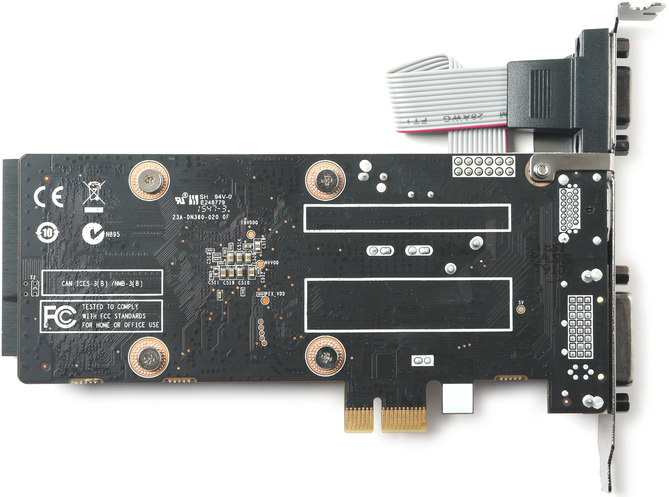
The main selling points of the ZOTAC GT 710 are its PCIe 3.0 x1 interface as well as three display outputs — DVI, HDMI 1.4 and D-Sub. Some entry-level PCs simply do not have PCIe x16 or x8 slots to install a graphics card, but virtually all desktops released in the last ten years have at least one PCIe x1 slot. ZOTAC’s new graphics card promises to be compatible with such systems. If owners of such PCs need to add one or two more display outputs, or just find their iGPUs too slow in Windows 10, they can buy the GeForce GT 710 1 GB PCIe 3.0 x1 graphics adapter. The board supports up to three displays, which should be enough for many workloads.
When it comes to performance in games, it is unlikely that the GeForce GT 710 is fast enough for more or less demanding titles. The product may be faster than iGPUs integrated into entry-level Celeron or Pentium processors, but only in various online games that do not require a lot of GPU horsepower anyway.NVIDIA GPU Specification Comparison GT 710 GT 720 GT 630 GT 610 CUDA Cores 192 192 192 48 Texture Units 16 16 16 8 ROPs 8 8 16 4 Core Clock 954MHz 797MHz 875MHz 710MHz Shader Clock N/A N/A N/A 1620MHz Memory Clock 1.8GHz DDR3 1.8GHz DDR3/ 5GHz GDDR5 1.8GHz DDR3 1.8GHz DDR3 Memory Bus Width 64-bit 64-bit 64-bit 64-bit VRAM 1GB or 2GB 1GB or 2GB 1GB or 2GB 1GB TDP 19W 19W 50W 29W GPU GK208 GK208 GK107 GF119 Launch Timeframe January, 2016 March, 2014 April, 2012 May, 2012 Launch Price $30 - $50 $49 OEM $49
As for market perspectives of ZOTAC’s GeForce GT 710 1 GB PCIe 3.0 x1, it should be noted that this is a niche product designed for owners of low-end systems, who need a better GPU or additional display outputs. Typically, people, who use such systems do not upgrade often, hence, ZOTAC’s new video card will hardly become a bestseller. Nonetheless, it will be a unique device for those who really need it.
ZOTAC does not list recommended prices on its web-site. However two stores which sell the device in Europe have it listed €58.30 ($65.8) and €84.7 ($95). This is definitely higher than you'd otherwise expect for a bottom-tier NVIDIA card, though it may very well be that retailers are counting on its unique nature.
Gallery: ZOTAC Quietly Releases GeForce GT 710 Graphics Card with PCIe x1 Interface




More...
-
04-25-16, 06:35 AM #5936
Anandtech: HP Unveils Third-Gen All-In-One Z1 Workstation: 4K Display, Intel Xeon, Pr
HP last week introduced its third-generation HP Z1 all-in-one workstation. The new system offers higher performance than its predecessor as well as a 4K resolution display. The new Z1 is also significantly more compact compared to prior two generations of HP’s Z1 machines, but retains upgradeablility and a serviceable design. In a bid to make the system smaller and slimmer, HP had to shrink the size of the display and move to a purely M.2/2.5-inch storage platform.
The HP Z1 G3 AIO workstation features 23.6” IPS display panel with 4K (3840×2160) resolution at a 60 Hz refresh rate, a rated 300 nits maximum brightness, 1000:1 contrast ratio as well as 178°/178° horizontal/vertical viewing angles. For comparison, the first and the second generations of HP’s Z1 featured 27” monitors with 2560×1440 resolution, but with the new incarnation of its AIO workstation the company preferred to install a smaller display panel to make the system more compact, increasing the PPI from 108.8 to 186.7.
The new HP Z1 G3 is based on the Intel Xeon E3 v5/Core i3/i5/i7-series (Skylake) processorsas well as the Intel C236 PCH (platform controller hub). The new AIO workstation can be equipped with up to 64 GB of DDR4-2133 SO-DIMM memory (ECC is supported only by the Xeon and the Core i3 CPUs), up from 32 GB of DDR3 supported by the previous-gen model. The graphics sub-system of the new HP Z1 G3 relies on either Intel’s HD Graphics 530/P530 cores (Gen 9, 24 EUs), NVIDIA’s Quadro M1000M 2 GB (512 stream processors) or M2000M 4 GB (640 stream processors) professional graphics adapters. Since the predecessors of HP’s Z1 G3 relied on low-power professional graphics adapters from NVIDIA in MXM 3.1 form-factor, it is not surprising that the company decided to install similar cards this time.Specifications of HP's Z1 Workstations Z1 G2 Z1 G3 Display Panel 27" IPS 23.6" IPS Display Resolution 2560 x 1440 3840 x 2160 CPU Intel Xeon E3-1281v3
Intel Xeon E3-1246v3
Intel Xeon E3-1226v3
Intel Core i7-4790
Intel Core i5-4590
Intel Core i3-4160
Intel Core i3-4170Intel Xeon E3-1270 v5
Intel Xeon E3-1245 v5
Intel Xeon E3-1225 v5
Intel Core i7-6700
Intel Core i5-6500
Intel Core i3-6100Chipset Intel C226 Intel C236 GPU Intel HD Graphics 4400 (Core i3)
Intel HD Graphics 4600 (Core i5)
Intel HD Graphics P4600 (Xeon E3-12x5v3)
NVIDIA Quadro K610M 1 GB
NVIDIA Quadro K2100M 2 GB
NVIDIA Quadro K3100M 4 GB
NVIDIA Quadro K4100M 4 GBIntel HD Graphics 530 (Core)
Intel HD Graphics P530 (Xeon E3)
NVIDIA Quadro M1000M 2 GB
NVIDIA Quadro M2000M 4 GBRAM Up to 32 GB of DDR3L-1600 Up to 64 GB of DDR4-2133
ECC with Core i3 and XeonStorage 2 x 2.5" or 1 x 3.5" HDDs
1 x mSATA SSD2 x 2.5"
2 x M.2-2280ODD Blu-ray or DVD burner
(if no Thunderbolt module installed)No Slots 1 MXM
2 mini-PCIe/mSATA (full-length)1 MXM
2 M.2 for SSDs
1 M.2 for WLANGigabit Ethernet Intel I217LM Intel I219LM Wi-Fi and BT Intel 2x2 7260 802.11ac
w/ BT4.0, mini-PCIeIntel 2x2 8260 802.11ac
w/ BT4.2 PCIeUSB 2 x USB 3.0
4 x USB 2.06 x USB 3.0
2 x USB 3.1 Type-CThunderbolt Thunderbolt 2
2 ports (if no ODD installed)Thunderbolt 3
2 ports via Type-CAudio 4 built-in speakers, microphone, audio connectors 4 built-in speakers with DTS Studio Sound, microphone audio connectors Webcam 1080p Power Supply 400 W 330 W Dimensions (HxWxD) 20.8 x 26 x 16.5 inches
52.83 x 66.04 x 41.91 cm23.5 x 8.3 x 21.5 inches
59.69 x 21.08 x 54.61 cmWeight 47 lbs
21.3 kilograms23.2 lbs
10.51 kilogramsStarting Price from $1999 from $1498 Launch 2014 2016
Storage in the HP Z1 G3 is something that was significantly redesigned compared to previous generations. The new workstation supports up to two 2.5” HDDs or SSDs with SATA 6 Gbps interface as well as up to two HP Z-Turbo Gen 2 NVMe SSDs in the M.2 2280 form-factor and both with PCIe 3.0 x4 interface. As a result, the Z1 G3 has inherently faster storage system than its predecessors (which did not support PCIe 3.0 SSDs), albeit without the opportunity for a large 3.5-inch mechanical. When it comes to storage space, not everything is that easy. HP itself installs SSDs and HDDs with up to 1 TB capacity, hence, it can equip its Z1 G3 machine with up to 4 TB of storage. However, since there are M.2 SSDs and 2.5” HDDs and SSDs with over 1 TB capacities, end-users could install such drives themselves due to tool-less upgrade and maintenance capabilities. Hardware RAID is supported only for 2.5” HDDs and not everything is clear with software RAID for M.2 drives. Moreover, the system no longer has an internal optical drive.
As for input/output capabilities, the new HP Z1 supports two Thunderbolt 3 ports (the number of controllers is unknown, could either be one controller per port or one controller for both) to connect USB-C and TB3 peripherals as well as external displays. There are also six USB 3.0 ports (one supports charging), one SD 4.0 media card reader, a DisplayPort 1.2 connector and a TRRS connector for headsets. Networking and wireless capabilities look standard for today’s workstations: one Intel I219LM Gigabit Ethernet controller as well as one Intel 8260 Wi-Fi 802.11ac with Bluetooth 4.2 module (installed into its own M.2 slot, thus, does not impact storage options). The system also has four internal stereo speakers with DTS Studio Sound software enhancement.
HP announced its first-generation Z1 AIO workstation back in early 2012. The machine was based on the Intel Xeon E3 v3 or the Intel Core i3/i5 processors (Ivy Bridge), NVIDIA’s mobile Quadro graphics and featured a 27” display panel, an optical drive (or an optional Thunderbolt module) module, desktop-class DDR3 DIMMs, SATA HDDs and so on. The HP Z1 G1 received the first ever 10 out of 10 AIO repairability score from iFixit because it was possible to replace all internal components (even its display panel) fairly easy. The downside of Z1’s architecture was its weight and cost. The maximum weight of the system with stand was around 21.3 kilograms and the cost started at $1899. The HP Z1 G2 followed its ancestor in many ways. However, its weight was still around 21.3 kilograms and the price started at $1999.
When designing the third-generation of its Z1 workstations, HP engineers tried to make the system lighter, thinner and more affordable. They decided to go with a smaller (yet, higher-resolution) display panel, SO-DIMMs rather than full-sized memory modules, removed the optical drive and also lost the 3.5” HDD bay. The result is evident: the system weighs 10.51 kilograms and is two times thinner than its predecessors. The cost of the workstation starts at $1498 in its basic configuration, which is lower compared to the Z1 and the Z1 G2. HP advertises tool-less upgrades and maintenance, but it remains to be seen whether the Z1 G3 is as easy to repair as its predecessors.
The HP Z1 workstation will be available from May.
More...
-
04-25-16, 07:33 AM #5937
Anandtech: Drobo 5D with BeyondRAID - Protected Direct-Attached Storage Made Simple
Drobo's direct-attached and network-attached storage units are quite popular in the market, but we have never had the opportunity to evaluate them on AnandTech. At CES 2016, we met with Drobo and they pitched to us the advantages of Drobo's BeyondRAID technology. BeyondRAID is used in both their DAS and NAS lineups, and we took the easier option to evaluate it by going the direct-attached route. Read on for our review of the Drobo 5D, a 5-bay DAS unit with support for seamless SSD caching.
More...
-
04-26-16, 06:31 AM #5938
Anandtech: AMD Releases Radeon Software Crimson Edition 16.4.2 Hotfix
With a couple of weeks since their last driver release, AMD has handed us another update. Alongside a list of fixes, and a focus on a narrow set of issues, the new version has now been given full support for external GPU docks using Thunderbolt 3 via AMD's XConnect platform.
Radeon Software Crimson Edition 16.4.2 brings the Driver version to 16.15.2401. With the new driver version comes a list of gaming updates with a heavy focus on Crossfire. Along with new Crossfire profiles for both Elite Dangerous and the new Need for Speed title, we have a list of 12 other fixes: eight of them are for various issues related to stuttering, flickering, or corruption in various games while playing with Crossfire enabled, and the other four target adjustments to Radeon software settings. These fixes include issues such as games failing to show up in the supported list, the power efficiency toggle showing up for some unsupported products, and some DX9 applications being unable to run with AMD Crossfire disabled. The last two relate to some users of the Radeon R9 380 experiencing slower than expected fan speed and GPU clocks on some AMD products remaining in a higher clock state after recovering from an application crash.
More importantly, this driver provides full support for AMD XConnect technology. With XConnect support, a system can have TB3 dock compatibility with either a Radeon R9 Fury, a Nano or a 300 series GPU housed in the external enclosure. As reported previously, AMD does make clear that a system also requires BIOS support alongside compatible drivers alongside the external TB3 dock. AMD also states in the fine print that not all external enclosures are pre-configured with an AMD Radeon GPU (so your mileage may vary), and also some external enclosures may not feature user upgradability.
As always, those interested in reading more or installing the updated hotfix drivers for AMD’s desktop, mobile, and integrated GPUs can find them either under the driver update section in Radeon Settings or on AMDs Radeon Software Crimson Edition download page.
More...
-
04-26-16, 08:09 AM #5939
Anandtech: The Riotoro Prism CR1280 Case Review
In this review we are having our first encounter with Riotoro, a new manufacturer of PC cases and peripherals. The Prism CR1280 that we are putting to the test today is the world’s first RGB case, a very large tower primarily designed for advanced gaming systems.
More...
-
04-26-16, 08:09 AM #5940
Anandtech: AMD Releases Radeon Pro Duo: Dual Fiji, 350W, $1500
These recent years we have seen a slow but steady buildup of VR from both technological developments to growing enthusiasm shown by consumers and the industry. Today AMD is releasing the Radeon Pro Duo to the market as their first card targeted at VR developers. This card is not being directly aimed at gamers, despite the capability under the hood, but focuses on official support for professional software. Additionally, multiple initiatives are being both spearheaded and supported by AMD and others to encourage growth in the VR sector.
The AMD Radeon Pro Duo was first announced back in March, with the card is being marketed for VR content creation first and foremost. With this card, AMD is promoting the ability to allocate one GPU per eye while powering VR experiences. This way the case is opened up for performance beyond what any other single card can offer today. Another use case for developers is offloading compute work to the second GPU while the first is used for graphical work which can make for a much smoother experience during demanding a workflow.
Gaming is definitely possible on Radeon Pro Duo and alongside the FirePro drivers for content creators, Radeon drivers will be available. The Pro Duo will not see validation for as many applications as a true FirePro card, but official support will be provided for applications important to gaming content creation such as Autodesk, Maya, and Blackmagic Davinci Resolve.
The Radeon Pro Duo is essentially and effectively two Radeon R9 Nanos together on a single PCB. At a high level, the Pro Duo should give us up to twice the performance at twice the power consumption (plus a bit extra for PCIe switches). To remove heat, the card comes with a closed loop cooler similar to that found on AMD’s Radeon R9 Fury X. This cooler, unlike the one found on the R9 295X2, provides a complete liquid cooling solution covering the VRMs on both GPUs along with the GPUs themselves. For reference, the pipes on this one are 540 mm long, and the double-thick radiator with fan comes in at 63 mmAMD GPU Specification Comparison AMD Radeon Pro Duo AMD Radeon R9 Fury X AMD Radeon R9 Fury AMD Radeon R9 295X2 Stream Processors 2 x 4096 4096 3584 2 x 2816 Texture Units 2 x 256 256 224 2 x 176 ROPs 2 x 64 64 64 2 x 64 Boost Clock 1000MHz 1050MHz 1000MHz 1018MHz Memory Clock 1Gbps HBM 1Gbps HBM 1Gbps HBM 5Gbps GDDR5 Memory Bus Width 2 x 4096-bit 4096-bit 4096-bit 2 x 512-bit VRAM 2 x 4GB 4GB 4GB 2 x 4GB FP64 1/16 1/16 1/16 1/8 TrueAudio Y Y Y Y Transistor Count 2 x 8.9B 8.9B 8.9B 2 x 6.2B Typical Board Power 350W 275W 275W 500W Manufacturing Process TSMC 28nm TSMC 28nm TSMC 28nm TSMC 28nm Architecture GCN 1.2 GCN 1.2 GCN 1.2 GCN 1.1 GPU Fiji Fiji Fiji Hawaii Launch Date Q2 2016 06/24/2015 07/14/2015 04/21/2014 Launch Price $1499 $649 $549 $1499
Moving past the cooling solution we get three full sized DisplayPort connectors and one full-size HDMI port. On the side of the card there are three 8-pin PCIe power connectors which will do more than an adequate job of supplying the rated 350W power draw. Note that 350W is the equivalent of dual R9 Nano cards (rated at 175W a piece), and will be clocked similarly. The reactive frequency adjustments to heavily loading, by inference, are likely to be similar but we expect AMD to be using low-power binned parts for their new high-end card.
The Radeon Pro Duo is launching today at $1500, or three times the current price of the R9 Nano. That’s a $500 price premium to combine two cards into one. Even with the price, AMD is keen to admit that the Radeon Pro Duo is now the single fastest graphics card on the market since the competition doesn’t offer a similar product at this time. From our perspective at AnandTech, we still advise that users are better off investing in a single powerful GPU first, and only scaling out into SLI/CF when requirements for extreme performance are such that a single GPU solution cannot provide. With VR, it stands a good chance at pushing gaming machines harder than anything we’ve seen so far, especially when trying to maintain a smooth and low latency experience. It all depends on the workflow and subsequent frame rendering methods used.
Alongside all of this news and information is renewed attention for several initiatives AMD is taking part in. AMD has placed the Radeon Pro Duo as the first card in their AMD VR Ready Creator Line. The goal being that the Pro Duo, coupled with Liquid VR, will create a powerful and capable platform to develop future VR experiences. The AMD VR Ready Creator Line is also the platform of choice for Crytek’s VR First initiative, which intends to foster growth in the VR industry by supporting developers by powering virtual reality labs in colleges and universities around the world.
We are approaching a crossroads between the outgoing GPU generation and the upcoming cards coming out later this year. The Radeon Pro Duo is part of an outgoing generation but aims to provide a competent platform for VR content creation following known architecture guidelines. Along with the new hardware released today, there are many initiatives in motion that aim to encourage growth in VR, and new hardware will continue to be an important tool for creating innovative experiences moving forward.
We have already seen Tmall post up an early listing for an XFX variant of the Pro Duo, and retailers should be showing other OEMs variants today as well. At current, AMD's base design is expected to be the sole variant of the Pro Duo.
Source: AMD
Gallery: AMD Radeon Pro Duo Slide Deck





More...
Thread Information
Users Browsing this Thread
There are currently 15 users browsing this thread. (0 members and 15 guests)






 Quote
Quote
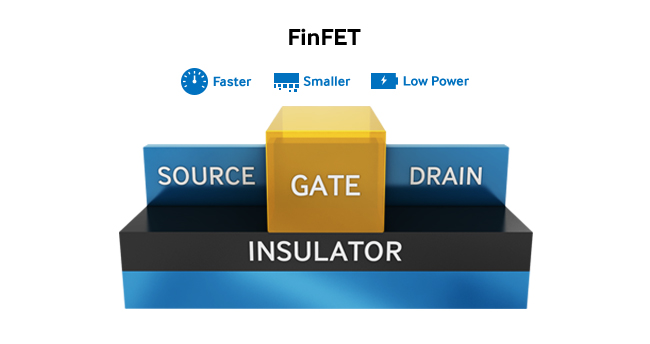

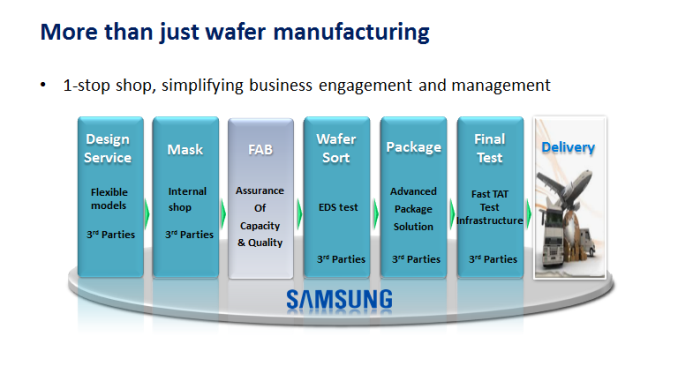
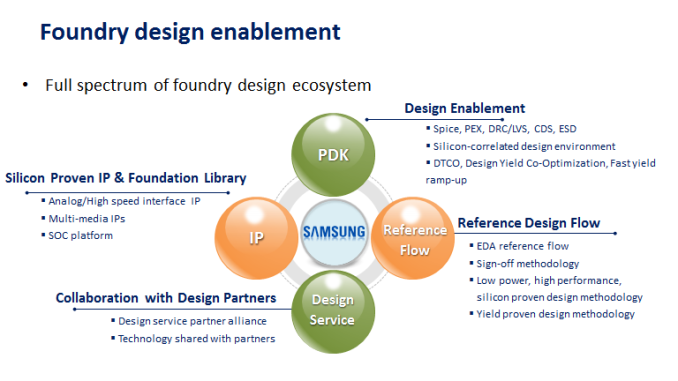
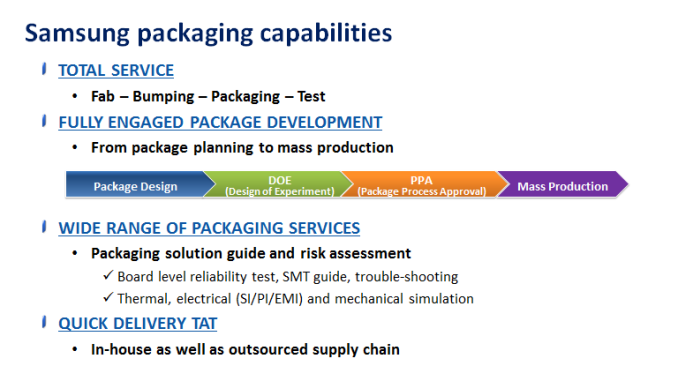

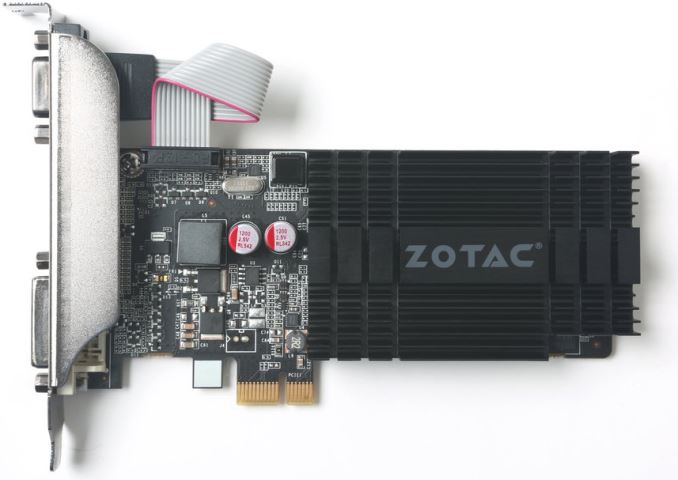


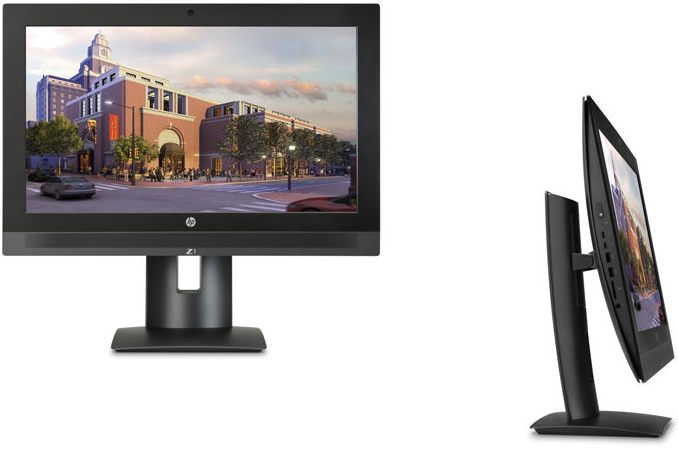
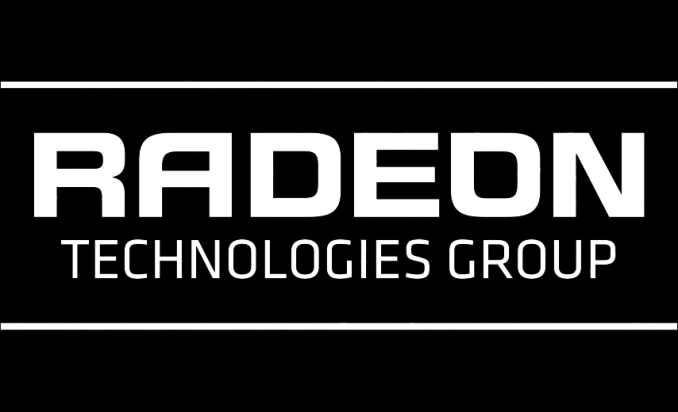
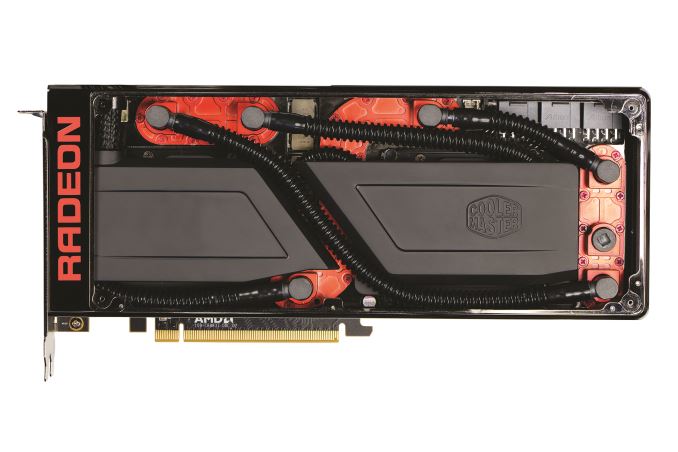
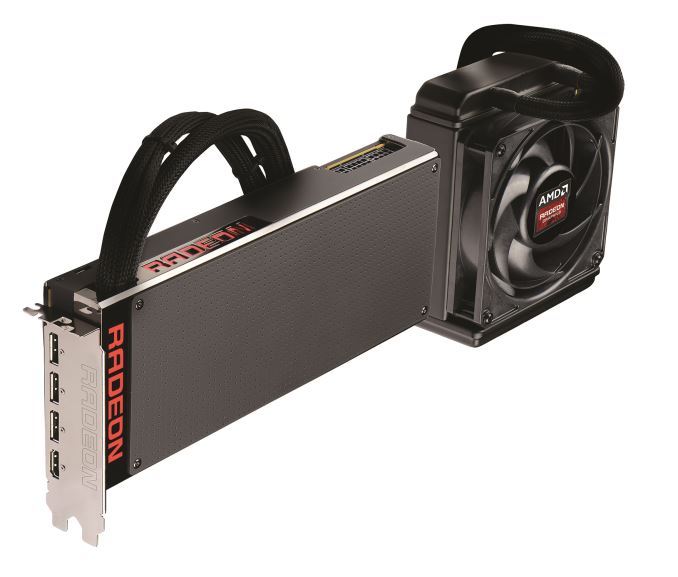







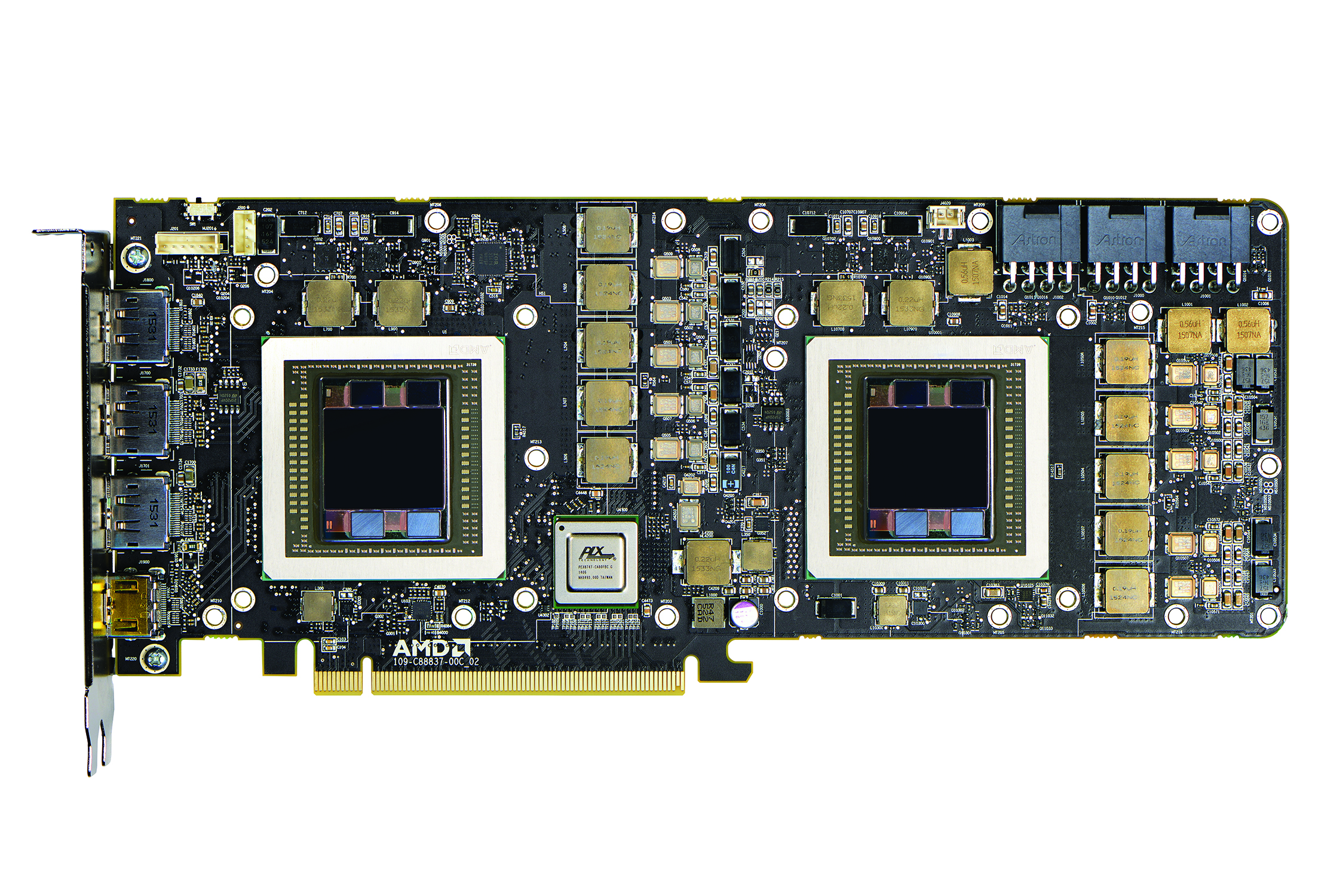

















Bookmarks